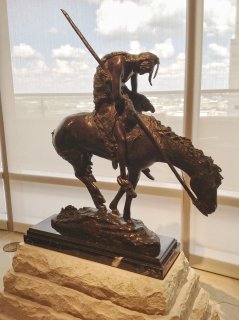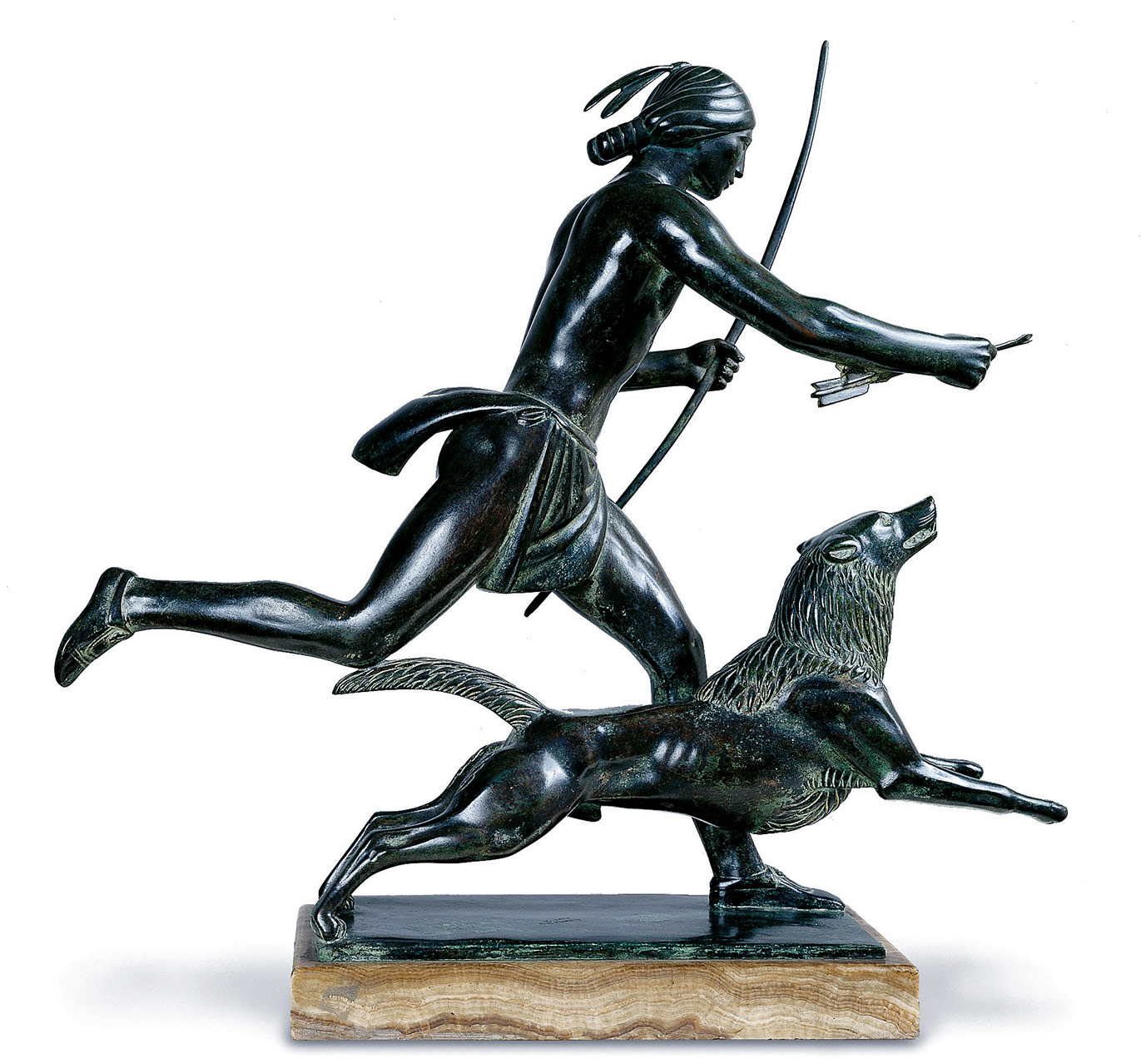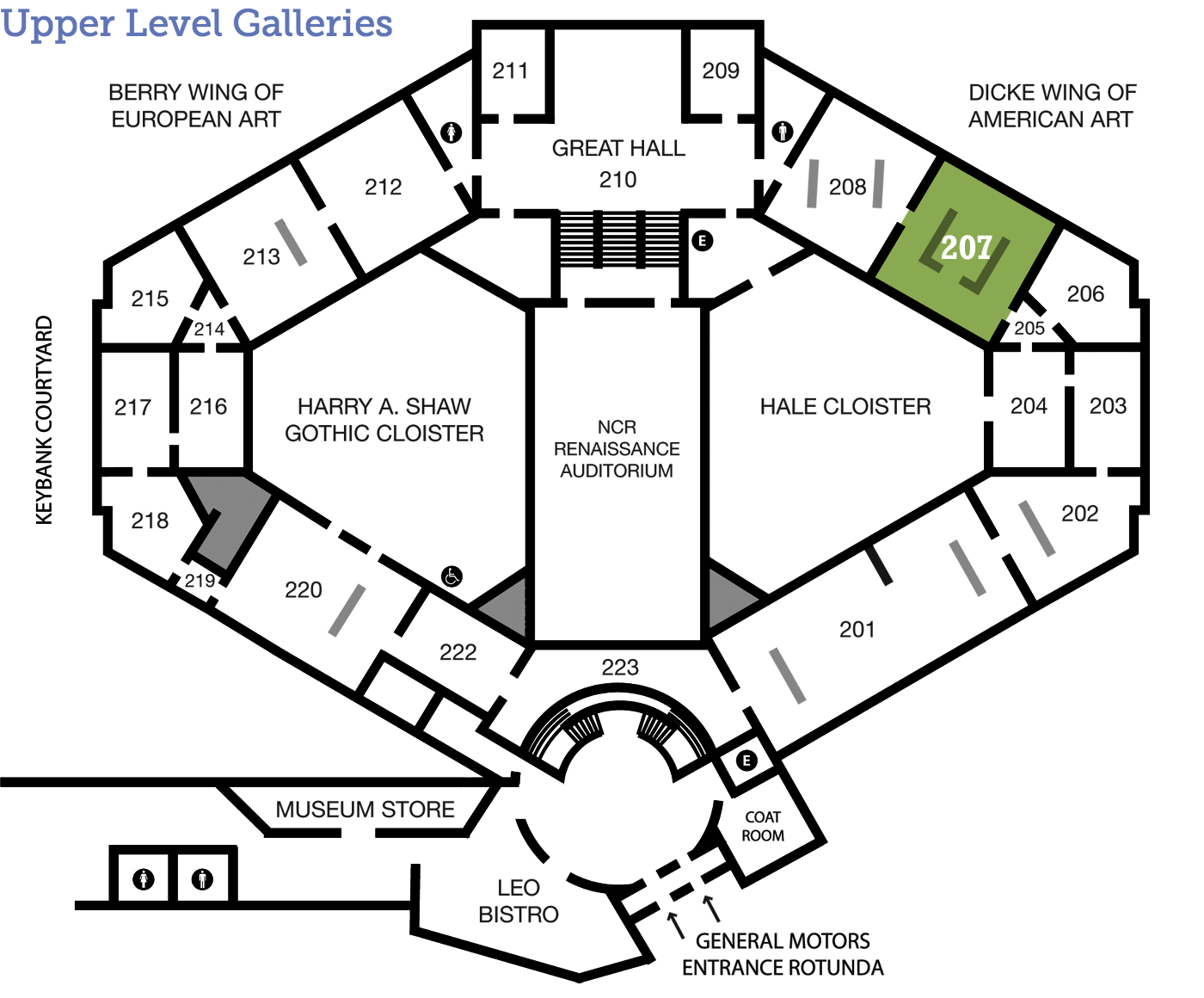
James Earl Fraser
End of the Trail
(1876–1953)
American 1894/1915 Bronze 36 x 32 x 8 inches Gift of Doctor Benjamin and Marian Schuster 2013.1
Think Again
James Earle Fraser’s sculpture is an attempt to commemorate the injustices Native Americans endured during the Trail of Tears. However, while outwardly sympathetic, the work may still perpetuate potentially harmful stereotypes about native peoples.
A Day in the Life
Tools and Techniques
Behind the Scenes
Look Closer
Head of the Trail: Reading Art
What is happening in this artwork, and how has the artist conveyed it? What words would you choose to fill in the blanks below? How would a different word change the way you might look at the sculpture?
The figure’s dress and __________ physique suggest a fit Native American man, yet his __________ shoulders and __________ head convey weariness and defeat, as well as the __________ of his spear, which is pointed passively at the ground. The slope of the horse’s __________, it’s tucked __________, and the figure’s unresisting, limp __________, which fail to grip the reins, signal the horse’s exhaustion and put the warrior at risk of slipping off its back. Wind blowing through the __________ of the horse and figure imbue the scene with further sadness. The title of the work, End of the Trail, links the statue with the Trail of Tears and suggests that Native American culture(s) has come to an “end”.
Just for Kids
Signs & Symbols
Dig Deeper
Heart of the Trail: Contextualization
In James Earle Fraser’s time, many Americans believed that the United States’ native tribes were doomed. They thought it was natural for a supposedly more advanced society to replace peoples they saw as primitive, and nostalgically considered “Indians” to be living examples of their own dead ancestors, engaged in a simpler, purer way of life. Do you think End of The Trail seems to depict a noble people ruined by European contact? Like many films and books in this vein, such imagery implies that authentic Native American culture vanished when tribes were forced to relocate to reservations, a still-popular viewpoint that ignores the identities and cultures of living Native Americans today.
Arts Intersected
A Popular Image
The DAI's sculpture is one of many versions of a work that Fraser began at the age of 18 and first exhibited at the 1915 Panama-California Exposition. Since that time, countless memorabilia items featuring End of the Trail have been produced, including bookends, belt buckles, T-shirts, and even the cover of the Beach Boys 1971 album Surf’s Up. Ironically, Fraser lamented this in his lifetime, as he claimed that he never saw any of the proceeds from these reproductions. Other artists have also repurposed End of the Trail, such as James Luna in his piece End of the Frail, underscoring the multiple ways the message of this iconic statue can be interpreted.
The Sculpture Speaks
Did You Know?
Expert Opinion
Look Around
Split in the Trail: Comparative Analysis
Around the same time that Fraser made End of the Trail, Paul Manship created a statue titled Indian Hunter with his Dog (1926), which is nearby in Gallery 204.
Discuss the similarities and differences between Indian Hunter with his Dog and End of the Trail with those around you. Do you think this statue illustrates concepts similar to Fraser’s sculpture? Why or why not? To help answer these questions see the “Dig Deeper” tab.

Paul Manship (American, 1855–1966), Indian Hunter with his Dog, 1926, bronze with marble base, 23 ¾ x 23 x 8 ½ inches. Bequest of the Honorable Jefferson Patterson, 1979.96.
About the Artist
Talk Back
Don’t Forget
From the 15th to the 19th centuries, millions of the native peoples inhabiting the Americas died due to European and American colonialism. However, envisioning Native Americans as essentially extinct continues to lead some U.S. citizens to ignore the struggles of contemporary Native Americans.
What do you know about the issues that Native Americans face in the present day?

